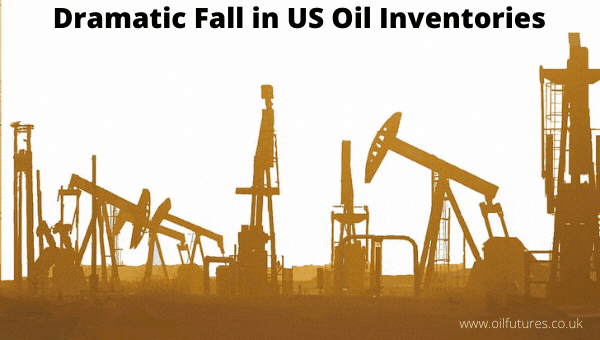Crude oil price began its upward movement again on Thursday, having been on decline for two consecutive days at the beginning of the week. The unexpected fall was attributed to the more-than-expected production of crude oil in the US, for the week ending on June, 25.
On Wednesday, however, the EIA, US Energy
Information Administration, released its weekly report on the US crude oil
inventories, something that both analysts and investors eagerly waiting for.
The report was really encouraging as far as the entire
oil sector is concerned: there is a significant fall in the US crude oil
inventories for the week ending July, 2; it was drop of 8.1 million barrels –
0.75%.
It is not just the weekly drop that was significant
for the crude oil markets; the consistent fall for seven successive weeks that
boosts the confidence of investors, reflecting the recovery of the US economy.
Since the US is the largest consumer of the crude
oil in the world, its economic strength is undoubtedly the main indicator that
analysts always use to gauge the market movements.
Last week, the development within the OPEC+ left the
investors and traders in an uneasy lurch; the spat between the UAE and Saudi
Arabia, which may have been growing for some time, moved into the public domain
casting a shadow of uncertainty over the sector.
The issue is far from over: that means, the expected
increase in production – 400,000 bpd – is still in the doldrums; there is no
new date to restart the stalled talks among the member of the OPEC+.
Behind the scenes, however, both Russia and the US are
trying to bring about an amicable solution to the bone of contention between
the UAE and Saudi Arabia. As both Middle Eastern key players in the OPEC+ are intensely
focussing on a post-oil-world, the race to make their corresponding nation a
global economic hub is becoming intensely competitive; to make matters worse,
the war in Yemen that both got sucked into shows no sign of respite with the
UAE showing its growing impatience for being part of it.
As far as Saudi Arabia is concerned, the Houthis are
attacking the Kingdom on regular basis with explosive-laden drones and
missiles. The tit-for-tat airstrikes have not been effective, other than
causing collateral damage – and international backlash.
The talks on the JCPOA, 2015 Iran nuclear deal,
meanwhile, have almost lost the momentum, after six rounds in Vienna, Austria.
With that the misplaced apprehension of the markets being flooded with extra
oil has died down.
In this context, the role of the US crude
inventories is back again in the ‘game’, becoming the key factor in determining
the oil price – until of course, something dramatic changes the status quo in
the volatile Middle Eastern politics.








